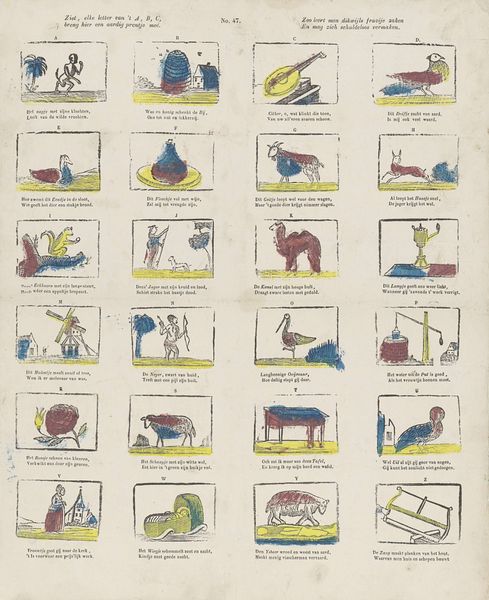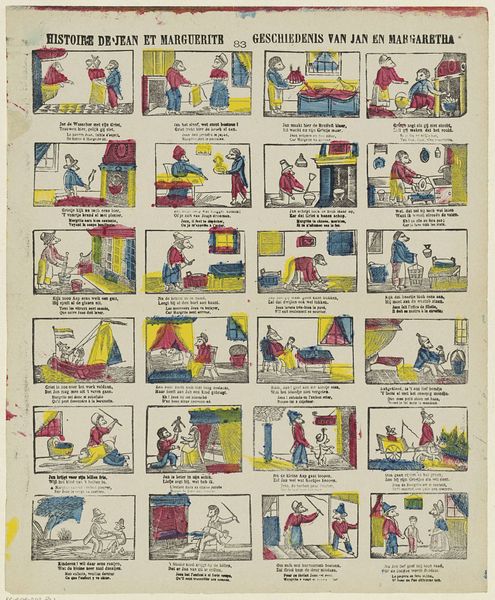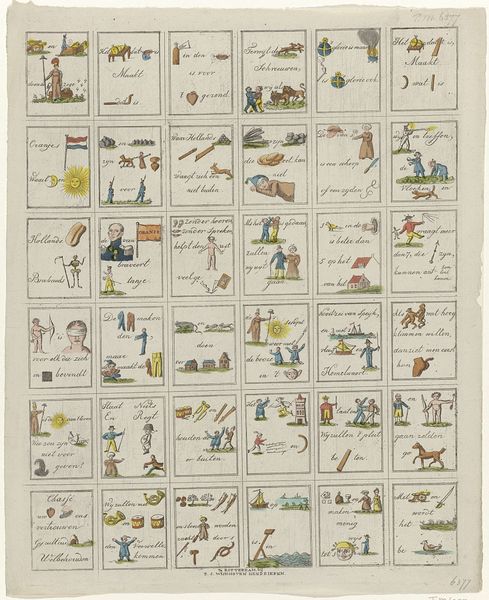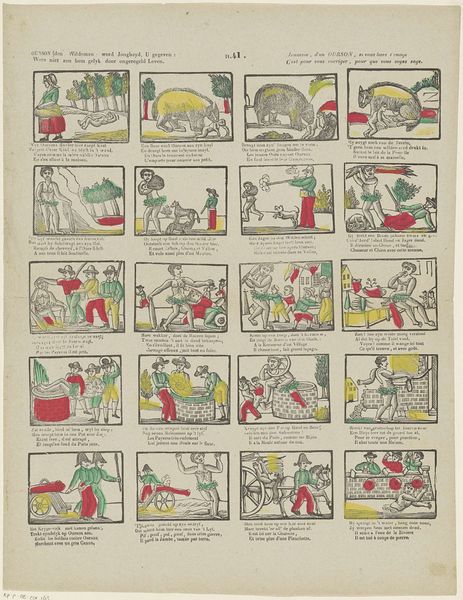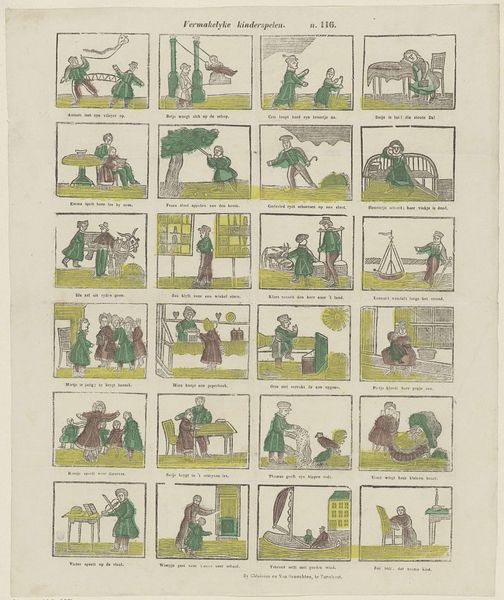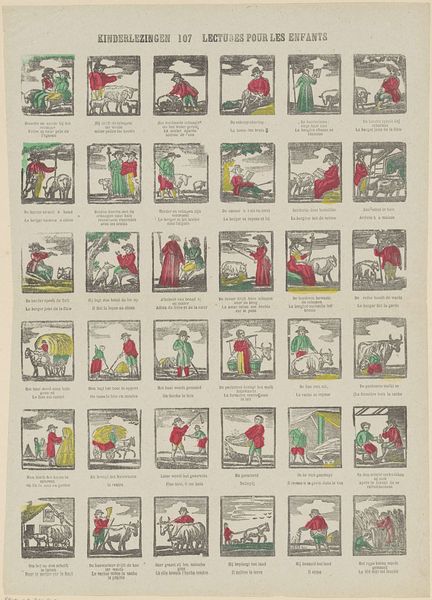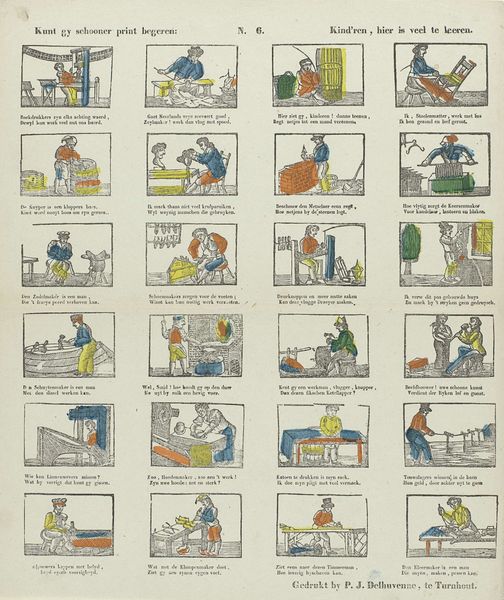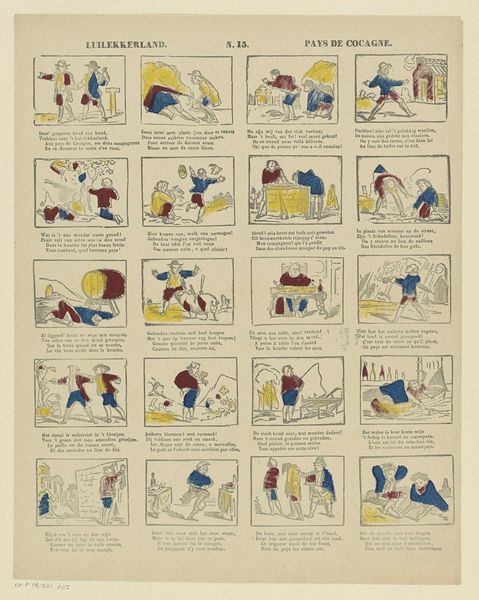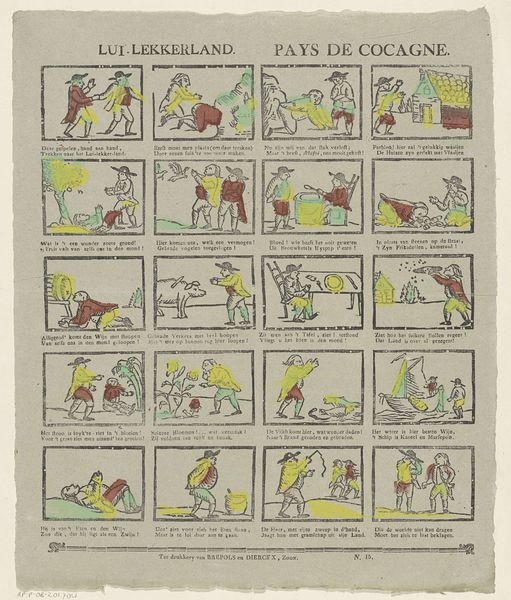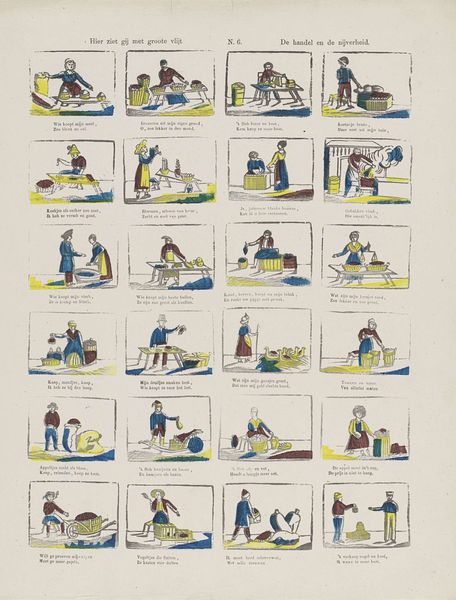
Ziet elke letter van 't A, B, C, / Brengt hier een aardig prentje meê. / Zoo leert men dikwijls fraaije zaken / En mag zich schuldeloos vermaken 1848 - 1881
0:00
0:00
Dimensions: height 395 mm, width 314 mm
Copyright: Rijks Museum: Open Domain
Curator: This lithograph, "Ziet elke letter van 't A, B, C, / Brengt hier een aardig prentje meê. / Zoo leert men dikwijls fraaije zaken / En mag zich schuldeloos vermaken", crafted between 1848 and 1881 by Lutkie & Cranenburg, is quite striking in its naivete. My first impression is that the use of color is fascinating, predominantly relying on shades of blue and yellow, within very simple geometric shapes, arranged to suggest perspective and depth. Editor: It's quite a compelling grid. For me, the piece conjures up ideas of childhood and instruction. The clear link between letters and corresponding pictures speaks to visual learning, which taps into the emotional association between image and language from youth onward. It evokes memories of alphabet books and simple morality tales. Curator: Precisely. The use of each illustration tied directly to a letter—from the 'aap' or ape to the 'wieg' or cradle—highlights a very didactic approach. We can explore how these images, although simple, still hold potent cultural connotations of both the subject and word in that period. What does a camel or tulip mean, presented alongside instruction on language and form? Editor: Beyond the individual symbolism, the sequence itself implies a cultural narrative. The collection of objects—a beehive, a goat, a cradle—provides a window into 19th-century Dutch life, values, and the domestic sphere, what families teach children about the surrounding environment. How curious the images have been maintained in the collective memory and in museums until this point. Curator: Indeed. Looking at the composition of the overall print, the regularity creates a kind of harmony despite the potentially disparate images. Each little scene is framed which encourages us to find similarities across contexts. Editor: Yes, that consistency grants cohesion—yet perhaps more interestingly—it also invites comparison, which is the beginning of symbolic reasoning in a mind, as we're meant to compare, order, distinguish, memorize and categorize each scene. The use of familiar imagery makes for easy access. Curator: Looking closer at the material—the humble lithograph medium— speaks to mass production and accessibility. Prints such as these helped disseminate not just letters, but entire worldviews to wider audiences, often including women, children and even servants. Editor: Definitely. For me, the power of the work rests in how simply it expresses complex layers of symbolic association and cultural messaging through a format we can grasp immediately, connecting letters with images across history. Curator: A charming glimpse into history through education, instruction, and image.
Comments
No comments
Be the first to comment and join the conversation on the ultimate creative platform.
